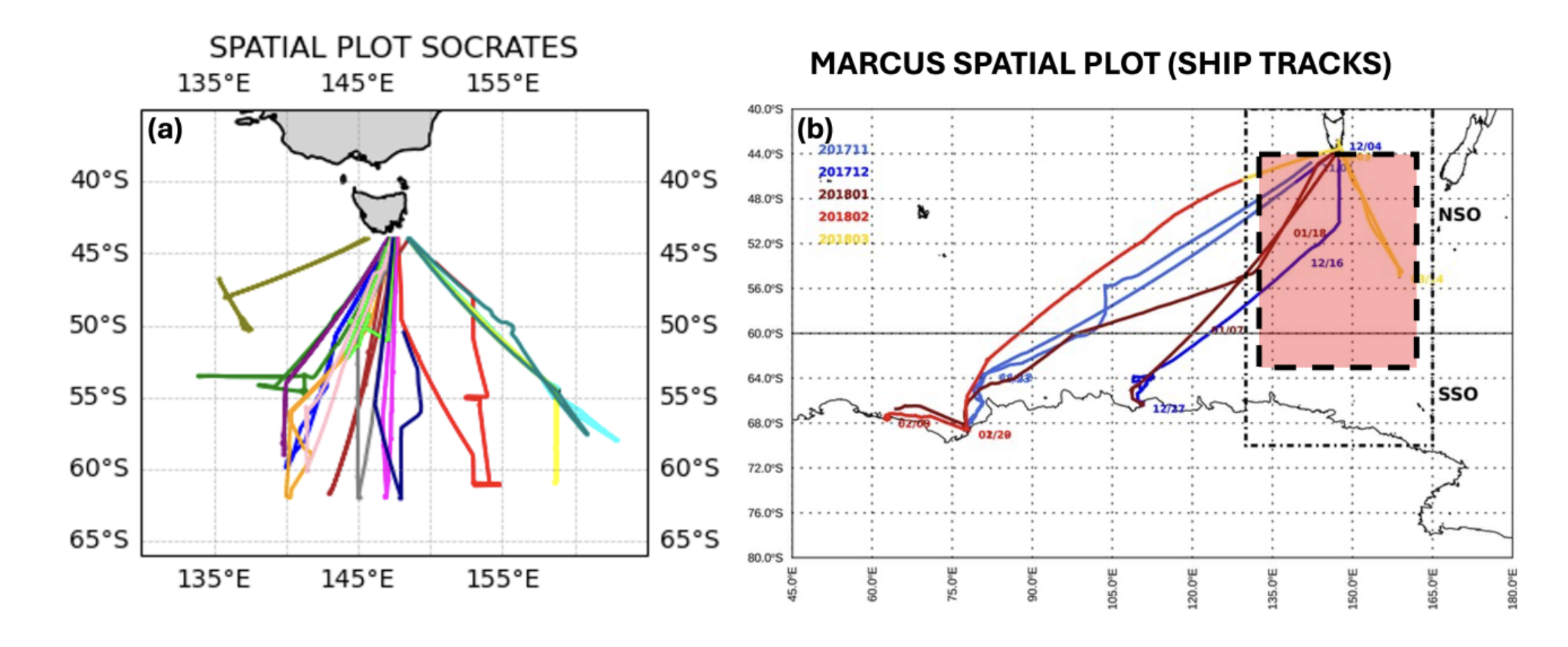Find it online: https://doi.org/10.1029/2024GL112079
A synergistic analysis of the radar-only and combined radar-lidar observations across the three platforms was conducted. To align with well-calibrated CloudSat cloud profiling radar (CPR) (and HCR) reflectivity measurements, a constant 4.5 dB offset was applied to all M-WACR reflectivitives during the MARCUS. This brings M-WACR data into better agreement with both HCR and CPR reflectivity measurements and facilitates a more reliable cloud fraction (CF) comparison. The total CFs (CFTs) derived from the three radars show excellent agreement. All three radars detect large drizzle drops, but M-WACR and HCR excel at detecting smaller cloud droplets that are often missed by CPR. The underestimated CFs by CPR are due to increased attenuation of CPR measurements below 3 km, and the combined effects of attenuation and surface clutter below 1 km. Combining radar and lidar observations enhanced cloud detection by 20%–60%. The results from this study provide new insights for designing future cloud radar systems.
Cite: Dong, X., Das, A., Xi, B., Zheng, X., Behrangi, A., Marcovecchio, A. R., & Girone, D. J. (2025). Quantifying the differences in Southern Ocean clouds observed by radar and lidar from three platforms. Geophysical Research Letters, 52, e2024GL112079. https://doi.org/10.1029/2024GL112079

Leave a Reply